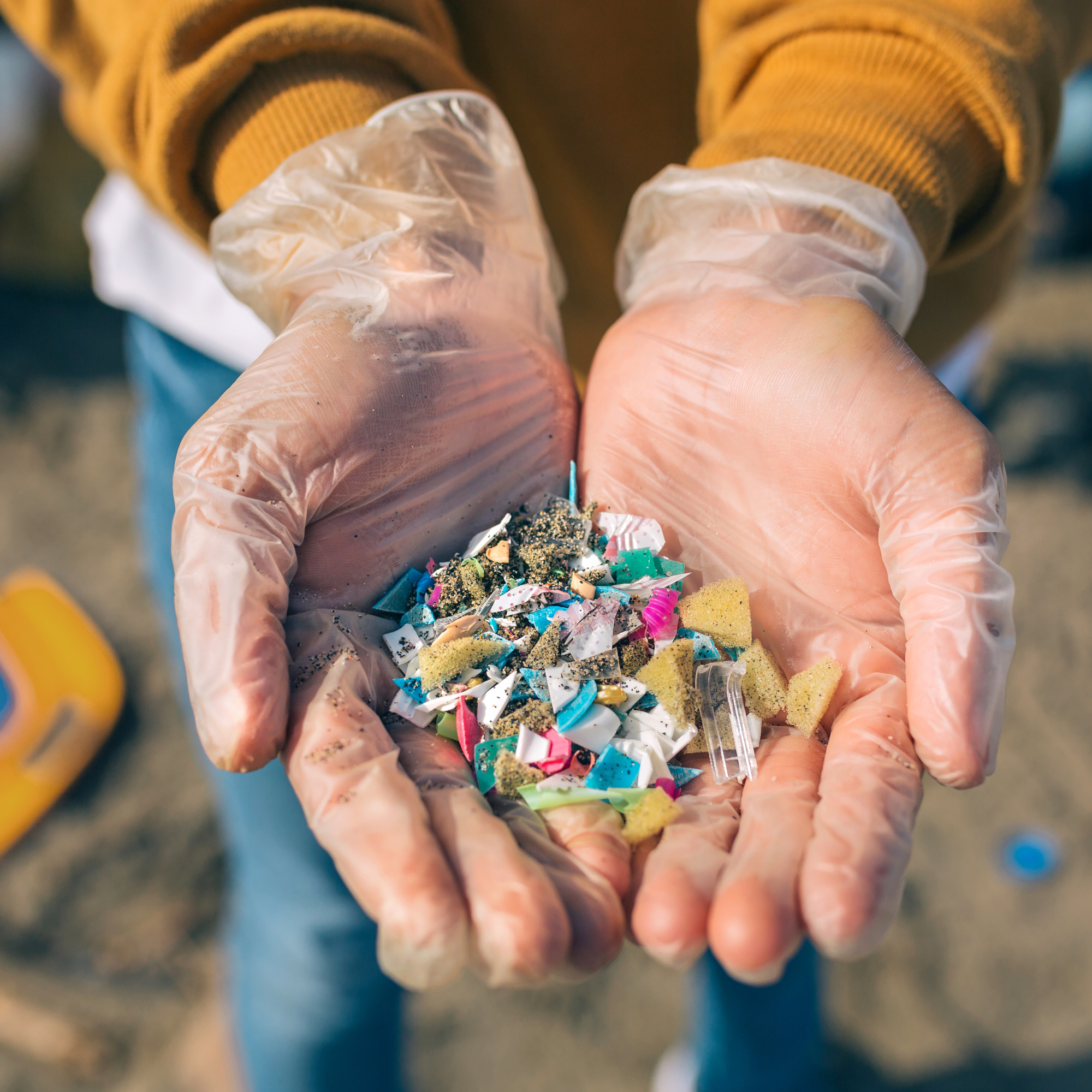Bottled water might seem like the cleanest and safest choice. But recent research reveals a troubling truth. Most bottled water contains hundreds of thousands of microplastic particles. These tiny fragments are invisible to the eye but may pose real risks to your health and the environment.
What Are Microplastics
Microplastics are tiny plastic particles less than five millimeters long. So tiny that they can slip through cell walls and potentially enter human tissues. Both come from the breakdown of larger plastic materials, including the bottles and caps used for packaged water. Over time, as bottled water sits in warehouses, trucks, or even your car, heat, friction, and sunlight can cause the bottle itself to shed these particles directly into the water you drink.
The 2024 Columbia University Discovery
A groundbreaking study found that bottled water contains far more plastic than scientists once thought.
- On average, one liter of bottled water contains about 240,000 plastic particles.
- That’s 10-100 times more than previously estimated.
- More than 30 million tons of plastic are dumped into our water and land yearly.
These particles primarily come from polyethylene terephthalate (PET) (the plastic used in bottles) and nylon, which is often used in plastic filters.
What Microplastics Could Mean for Your Health
The full health impact of microplastics is still being studied, but what researchers do know isn’t comforting.
- Some studies have suggested a possible link between microplastic exposure and increased risk of lung and colon cancer, though more research is needed to confirm these connections.
- Higher risk of heart attack, stroke, and death.
- Children's organs that are still developing could be at risk.
The World Health Organization (WHO) notes that microplastics have been detected in nearly all water sources. Bottled water, in particular, has some of the highest concentrations.
Bottled Water: Not as “Pure” as It Looks
While bottled water brands market purity and safety, studies have consistently shown the opposite:
- 93% of bottled water brands tested in a global study contained microplastics.
- Tap water often contains far fewer plastic particles.
- Storage, transportation, and heat exposure all increase plastic leaching.

In short, the longer that water sits in a plastic bottle, the less “pure” it becomes.
A Smarter Way to Drink Cleaner Water
The good news? You don’t need bottled water to get safer and cleaner water. With Blu Technology, you can filter your water right at the source, eliminating contaminants, including microplastics, before they ever reach your glass (or your tank).
- Advanced 0.2 Micron Filter: Engineered to capture particles smaller than one micron.
- UVC purification: Powerful UV light that eliminates bacteria and viruses.
- Reusable and Sustainable Filtration: No plastic bottles, no waste.

Microplastics are a growing concern, and bottled water is one of the biggest contributors. The science is clear. When it comes to long-term health and environmental impact, filtering your own water is the smarter, cleaner choice. At Blu Technology, we believe cleaner water should never come with hidden ingredients. That’s why we design systems such as the Adventure Series AR3 5-inch, AR3 XLt 10-inch, R3, the TRIO, and our four-stage advanced AR3 UVC System. All of which removes contaminants, reduces waste, and gives you peace of mind wherever you go.


Share:
Inside the Tank: What Really Happens When Water Sits Too Long in Your RV
Filtration vs. Purification vs. Boiling: What Really is the Difference?